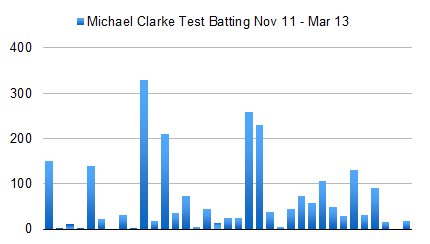How Kumar Sangakkara Used Hideous Batting Form to Win the World Twenty20

Kumar Sangakkara signed off his Twenty20 career with a Man of the Match performance steering Sri Lanka to World glory.
Yet entering final Sunday, Kumar was experiencing something every batsman feels: hideous batting form.
Sri Lanka had progressed to the final of the tournament despite Sangakkara scoring 19 runs at an average of 4.75. He was horribly out of form and couldn't buy a run.
We all know that feeling!
For most players, the downward spiral tends to continue, our scores remain low, our confidence is eroded on a daily basis and our emotions shift between dejection and desperation.
But this cycle did not happen to Kumar Sangakkara.
The Sangakkara mindset
There is no god given right for anyone to score runs every innings. No batter is consistent. Even the greats like Bradman, Lara and Tendulkar were not consistent run scorers from innings to innings.
The great have a mindset that says;
"I could score runs today and if I do I need to make it a big one".
This sets them up for both success and failure, helps them to accept that failure is a part of the game and prepares the player mentally to take advantage of the next opportunity he has to get a "Daddy hundred" or play a match winning innings.
But that's not all.
"The more I fail, the bigger the chance that my next score will be a massive one!"
The statistics back the Sri Lankan. Here are Kumar's last 7 T20I innings on a Manhattan graph. The left hand side of the graph looks hideous doesn't it?

Sangakkara didn't panic. He knew the trend was in his favour.
Clarke's 46% failure

Michael Clarke scored 2319 runs at 72.46 in the period of time featured above. Sounds bulletproof? Except when you notice that Michael scored between 0-20 on 16 occasions in his 35 innings.
He failed in 46% of his innings.
And still averaged 72.46.
Notice the period of low scores between the huge spikes in the Manhattan skyline. The more he fails, the more his chance of the next innings being a huge hundred.
"I could score runs today, and if I do I will make it a massive one"
What could this mean to us?
How can we change our language to change the expectation of the batters?
Let me know what you have taken from this article by leaving a comment.
- Login to post comments


Comments
Form is a myth, anyway.
it's the old favorite, PMA, don't dwell on failure if you do then that is all you will see. If you do accept that some days it just doesn't go right, as a batter it could be a great delivery, magnificent catch or a freak run-out how we handle failure is all important.
Quite how you would go about coaching this will depend on how well you understand those players under your tuition, different learning styles will require different methods of re-enforcement. Personally my own approach has always been that I can only do something about the next ball I face not the last one so don't dwell too much on it, at the end of the day if the ball is coming out of the middle more than off the edge I must be doing something right? Some players I know will need it analysed and understood but that isn't me.